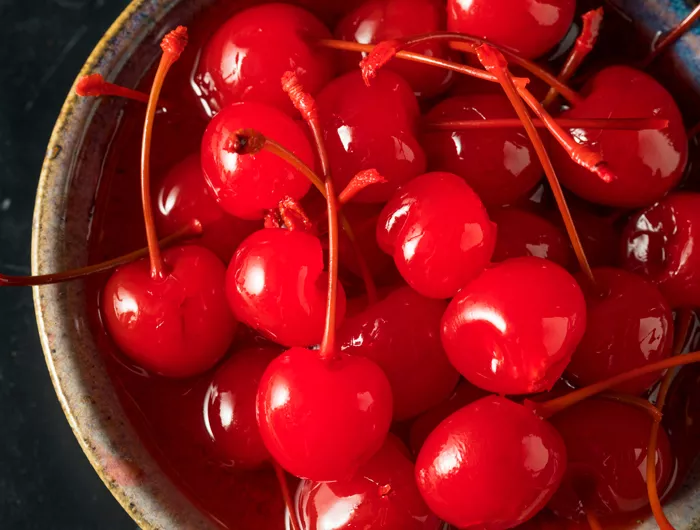It’s in candy, cherries, and snack cakes, but FDA says the synthetic food dye Red 3 is too dangerous for lipstick. Now, California has passed AB418, a bill banning Red 3 and three other food additives; similar legislation is moving along in New York. Here’s what you should know.
With the passage of CA Assembly Bill 418, California is poised to become the first state in the country to protect consumers from four food additives—the food dye Red 3, potassium bromate, brominated vegetable oil (BVO), and propylparaben. These additives are linked to increased risk of cancer and reproductive issues.
The same ingredients—plus titanium dioxide, which was also included in the original AB418 ban—are the target of New York Senate Bill S6055A, introduced by Sen. Brian Kavanagh (D-Lower Manhattan).
AB418, if signed into law by Governor Gavin Newsom, will be in effect Jan. 1, 2027. At that point, selling foods containing the four newly banned ingredients in California will be illegal. The good news for manufacturers: The EU banned these ingredients for most food uses years ago, so companies with EU-approved versions of their products have already found a way to formulate without Red 3, BVO, propylparaben, and potassium bromate.
What is Red 3?
Red 3, also labeled Red Dye No. 3 or FD&C Red 3, is a synthetic food coloring. Red 3 is an especially unsafe additive—and regulators have known this for decades. Since the early 1980s, FDA had evidence that Red 3 caused cancer in laboratory animals. The National Toxicology Program considered the evidence “convincing.” As a result, in 1990, the agency banned the use of Red 3 in cosmetics and externally applied drugs, and said it would “take steps” to ban its use in foods, ingested drugs, and dietary supplements. More than thirty years later, those steps were never taken, and people are still consuming the dangerous dye. That’s why California and New York are making moves at the state level to protect consumers.
Despite its FDA recognition as a carcinogen, Red 3 is lurking in hundreds of candies, cakes, and other foods. This includes common varieties of candy corn, Nerds, Peeps, Pez, and SweeTarts; dozens of seasonal Halloween items; and even in ostensibly healthy options, like fruit cocktails containing cherries. A search of Food Scores, a database maintained by the Environmental Working Group, generated 3,183 brand-name food products that contain Red 3—including hundreds of foods made by the country’s biggest food companies.
CSPI and dangerous food additives
Earlier in 2023, CSPI petitioned FDA to make good on its promise to remove Red 3 from the list of permissible food dyes. Amendments to the nation’s food laws passed in 1958 and 1960 included a provision called the Delaney Clause, which prohibits the approval of any food additive if it is shown to cause cancer in people or animals. For that reason, the petition filed by CSPI and other groups and scientists says that the FDA is statutorily obligated to delist Red 3.
What you can do
CSPI recommends avoiding all synthetic food colorings, as well as titanium dioxide, which is potentially damaging to DNA and still legal for food uses in all 50 states. Many of these colorants, including Red 3, pose health risks to consumers. Read more about artificial food dyes and why we rank these as “Avoid” in our Chemical Cuisine database of food additives.








